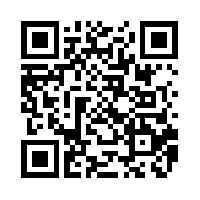Abstract
In this article the conceptual power of Dooyeweerdian philosophy for designing technology is reviewed. It is shown that the philosophical richness of the theory of modal aspects, the theory of individuality structures, and the theory of ground motives has to be disclosed to engineers in order to apply them in their daily practice. The Triple I model has been developed with engineers in a dialogical process. This model takes user practice as a starting point and analyses this practice from three different perspectives: identity or intrinsic values of the user practice; inclusion of the justified interests of stakeholders, and the ideals, dreams and values that co-shape designs. Other philosophical tools are the theories of modal aspects and of individuality structures. All these tools are made concrete for engineering practice by means of schemes, drawings, design questions, moral standards, check-off lists and design heuristics. By adopting this model, it is hoped that these tools can be fruitfully applied in engineering practice.Copyright information
- Ownership of copyright in terms of the Work remains with the authors.
- The authors retain the non-exclusive right to do anything they wish with the Work, provided attribution is given to the place and detail of original publication, as set out in the official citation of the Work published in the journal. The retained right specifically includes the right to post the Work on the authors’ or their institutions’ websites or institutional repositories.
Publication and user license
- The authors grant the title owner and the publisher an irrevocable license and first right and perpetual subsequent right to (a) publish, reproduce, distribute, display and store the Work in any form/medium, (b) to translate the Work into other languages, create adaptations, summaries or extracts of the Work or other derivative works based on the Work and exercise all of the rights set forth in (a) above in such translations, adaptations, summaries, extracts and derivative works, (c) to license others to do any or all of the above, and (d) to register the Digital Object Identifier (DOI) for the Definitive Work.
- The authors acknowledge and accept the user licence under which the Work will be published as set out in https://creativecommons.org/licenses/by/4.0/ (Creative Commons Attribution License South Africa)
- The undersigned warrant that they have the authority to license these publication rights and that no portion of the copyright to the Work has been assigned or licensed previously to any other party.
Disclaimer: The publisher, editors and title owner accept no responsibility for any statement made or opinion expressed by any other person in this Work. Consequently, they will not be liable for any loss or damage sustained by any reader as a result of his or her action upon any statement or opinion in this Work.
In cases where a manuscript is NOT accepted for publication by the editorial board, the portions of this agreement regarding the publishing licensing shall be null and void and the authors will be free to submit this manuscript to any other publication for first publication.
Our copyright policies are author-friendly and protect the rights of our authors and publishing partners.

